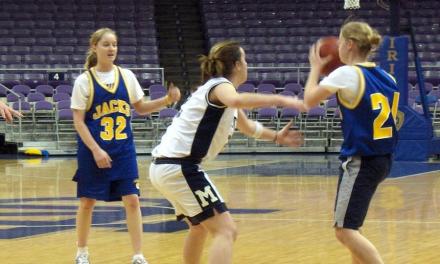Forming the PE curriculum – one of the most interesting, but most challenging, roles that a Head of PE can have! With very little structure or guidance from the national curriculum, it is often left to the department manager to decide the direction and structure of the PE curriculum. In this article, we explore ways to make the curriculum relevant to the students.
1. Facilities
The first consideration that must be made when planning the PE curriculum relates to the sporting facilities available at the school. If your school is lucky enough to have access to specialist facilities, such as, for example, an athletics track, then athletics should take a meaningful part of your curriculum as it will allow increased opportunities for success for your pupils. Similarly, if you have access to a 4G pitch which doesn’t free, activities which can be delivered on this should be a part of your curriculum. Trying to deliver a hockey scheme of work on a bobbly, overgrown field will not allow pupils in your school to make the most progress. If you are not blessed with sufficient sporting facilities, consider what provision is available locally for you to hire during lesson times.
2. Links to KS4/KS5 outcomes
The next consideration to make when planning your PE curriculum is how your core PE lessons can underpin your KS4 or KS5 examination group outcomes. If you know that the majority of your students submit practical make for in table tennis at GCSE PE, or as a coach at Cambridge National, your KS3 curriculum needs to have sufficient focus on these activities. With pressure increasing on the timetable of KS4 students, KS3 and KS4 core PE lessons must underpin the aims and objectives of the examination courses that you deliver.
3. Pathways
Another consideration that needs to be made when planning the PE curriculum is the pathways to participation available in your local area. Most PE departments aim to instil a love of sport and lifelong participation in pupils, so it is essential that a PE curriculum links to opportunities available in the local area. If, for example, your school is based in an area of the country in which Rugby League thrives, it should be delivered over Union rules. Similarly, if you are in an area where there are lots of opportunities to participate in Netball, then this sport should be delivered and the club links should be promoted to students.
4. Expertise
The final consideration we suggest to make when planning your PE curriculum is to reflect upon the expertise that staff have within your department. Although teaching to specialism is often a hotly debated topic with both pros and cons, the sporting background of the staff in your department could and should be a driver for your PE curriculum. If you have a table tennis specialist in your department, not only can this person become a role model for your pupils in terms of their experience and expertise, but they can also support other staff in their delivery of this sport by offering in-house CPD to other members of your department.
5. Pupil Voice
Our final suggestion when planning your PE curriculum is to gain the opinion of the main stakeholders – the pupils themselves! Finding out how they view the current curriculum, and what changes they would like to see, can provide valuable insight which can help a Head of PE to tailor the PE curriculum to make it more relevant and appealing to pupils. This is likely to lead to increased motivation and engagement levels which is ultimately the goal of many departments.
If you would like to learn more about a platform that can provide lesson plans and schemes of work visit PE Office’s resources. These are downloadable and can help deliver a PE lesson with ease whilst simultaneously raising engagement.









